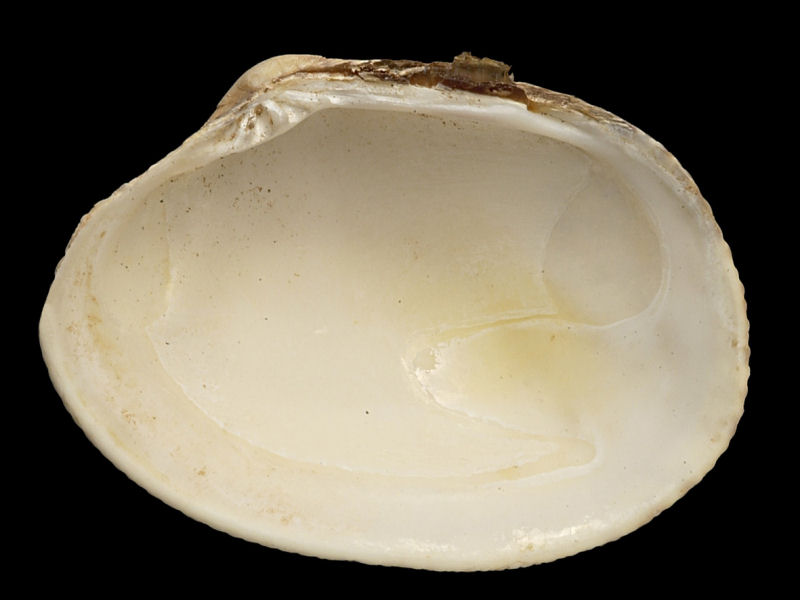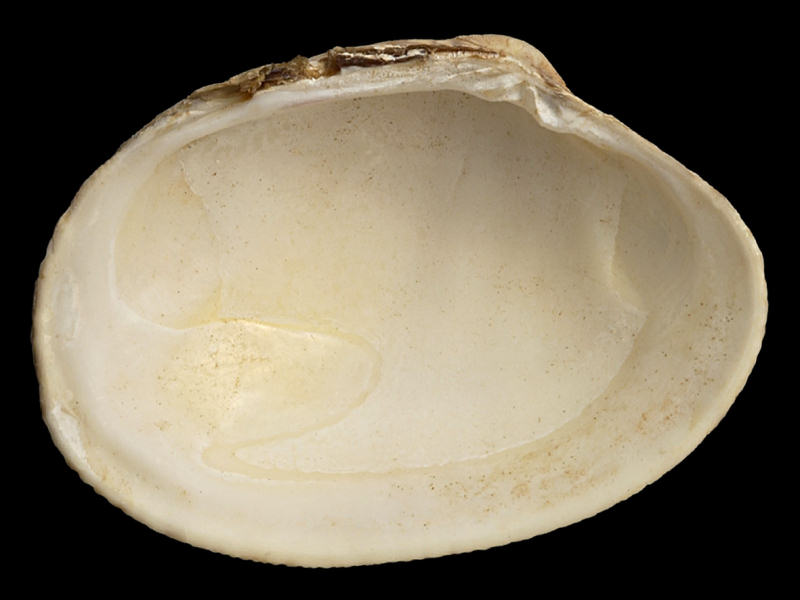Chequered carpet shell (Ruditapes decussatus)
Distribution data supplied by the Ocean Biodiversity Information System (OBIS). To interrogate UK data visit the NBN Atlas.Map Help
| Researched by | Michelle Carter | Refereed by | Admin |
| Authority | (Linnaeus, 1758) | ||
| Other common names | - | Synonyms | Venerupis decussata , Tapes decussatus |
Summary
Description
Recorded distribution in Britain and Ireland
Mainly found off the southern and western coasts of Britain and around Ireland.Global distribution
Found around the British Isles and western Europe, from the Mediterranean to west Africa.Habitat
This species tends to bury itself in sand, muddy gravel, or clay and is found on the lower shore and shallow sublittoral.Depth range
-Identifying features
- The shell is cream, yellowish, or light brown in colour.
- The sculpture of the shell consists of concentric grooves and radiating ridges creating a chequered appearance.
- Criss-cross (decussate) markings posteriorly.
- Can grow up to 7.5 cm.
- Each valve has three teeth, one on the left valve and two on the right which are bifid.
Additional information
The chequered carpet shell is superficially similar in shape and size to the Manila clam Ruditapes philippinarum and to Venerupis senegalensis. The chequered carpet shell is distinguishable from the Manila clam by its very distinct radiating lines present on the shell and white foot, Ruditapes philippinarum is distinguishable by the distinctive black and white markings and orange foot. Venerupis senegalensis often has zigzag markings on the shell.Listed by
- none -
Bibliography
Datasets
Centre for Environmental Data and Recording, 2018. Ulster Museum Marine Surveys of Northern Ireland Coastal Waters. Occurrence dataset https://www.nmni.com/CEDaR/CEDaR-Centre-for-Environmental-Data-and-Recording.aspx accessed via NBNAtlas.org on 2018-09-25.
Conchological Society of Great Britain & Ireland, 2018. Mollusc (marine) data for Great Britain and Ireland - restricted access. Occurrence dataset: https://doi.org/10.15468/4bsawx accessed via GBIF.org on 2018-09-25.
Conchological Society of Great Britain & Ireland, 2023. Mollusc (marine) records for Great Britain and Ireland. Occurrence dataset: https://doi.org/10.15468/aurwcz accessed via GBIF.org on 2024-09-27.
Fenwick, 2018. Aphotomarine. Occurrence dataset http://www.aphotomarine.com/index.html Accessed via NBNAtlas.org on 2018-10-01
Kent Wildlife Trust, 2018. Kent Wildlife Trust Shoresearch Intertidal Survey 2004 onwards. Occurrence dataset: https://www.kentwildlifetrust.org.uk/ accessed via NBNAtlas.org on 2018-10-01.
NBN (National Biodiversity Network) Atlas. Available from: https://www.nbnatlas.org.
OBIS (Ocean Biodiversity Information System), 2025. Global map of species distribution using gridded data. Available from: Ocean Biogeographic Information System. www.iobis.org. Accessed: 2025-07-09
Outer Hebrides Biological Recording, 2018. Invertebrates (except insects), Outer Hebrides. Occurrence dataset: https://doi.org/10.15468/hpavud accessed via GBIF.org on 2018-10-01.
South East Wales Biodiversity Records Centre, 2018. SEWBReC Molluscs (South East Wales). Occurrence dataset: https://doi.org/10.15468/jos5ga accessed via GBIF.org on 2018-10-02.
Citation
This review can be cited as:
Last Updated: 18/09/2003





